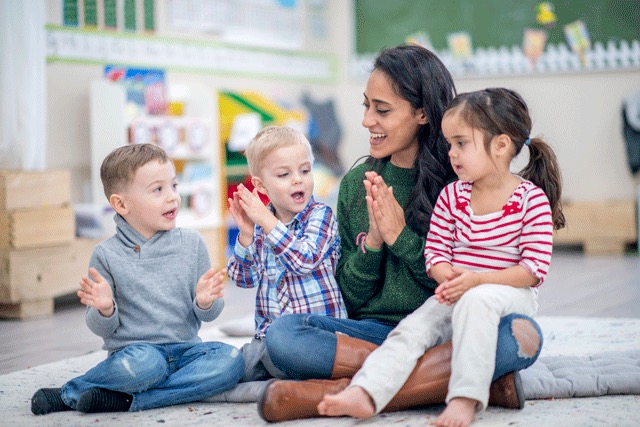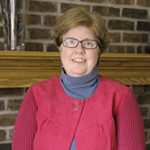
One of the wonderful aspects of early childhood programs is that the staff, together with children and families, can create rituals and traditions that build a sense of community within the program. Some children spend several years enrolled in early care and education programs. Therefore it is important for caregivers and teachers to intentionally engage children and families in meaningful routines and traditions. For young dual language learners and their families, the early care and education programs may be their first experience with U.S. educational programs. Rituals and routines that promote a sense of community may ease some fears and anxiety that families often have when their young children first attend a preschool or child care program.
In their book, Rituals and Traditions: Fostering a Sense of Community in Preschool, Jacky Howell and Kimberly Reinhard describe practical examples of how early care and education providers can create daily, weekly, monthly, and yearly traditions that foster a sense of community among the children and families they serve. Howell and Reinhard encourage teachers to reflect on what they hope children and families remember about their early care and education program and ask: “Ten years from now, if you were to interview children and families from your program, what rituals and traditions would you like them to remember?” (p. 17)
This is a wonderful question to ask staff when setting goals or planning programwide events. When programs serve young dual language learners, it is even more important to ask the children’s families to work with the staff to connect home and school rituals and traditions.
The authors provide examples of routines and rituals that contribute to a sense of community among program staff and families. One favorite routine is to regularly sing songs and read stories that children also hear at home. Using familiar songs and stories as part of classroom or program rituals and routines provides regular opportunities to connect the home culture and the early childhood program. Program staff can intentionally incorporate songs and stories from the children’s cultural and linguistic backgrounds as part of the ongoing daily routines, not only on holidays or special occasions. Familiar songs, stories, and food foster a young child’s feelings of safety and well-being.
Encouraging families of young dual language learners to share information with teachers and caregivers about their family’s daily routines presents opportunities for all families to participate in creating the program’s sense of community. Teachers can be purposeful when connecting home and school routines to provide continuity across children’s days. For example, greeting a child each morning by using the same phrase that her parent uses in the family’s heritage language shows the child that her teacher values her family’s language. This small gesture contributes to a sense of belonging among the families, children, and staff.
Thoughtfully planned rituals and traditions that incorporate the children’s cultural and linguistic backgrounds can serve as the basis upon which young dual language learners feel welcome and a valued member of the early childhood program community. It is good to remember that each day when young dual language learners participate in early care and education program routines and traditions, they create memories of their early childhood settings that will be part of their lives for many years to come.
Reference
- Howell, J., & Reinhard, K. (2015). Rituals and traditions: Fostering a sense of community in preschool. Washington, DC: National Association for the Education of Young Children.


 Printer-friendly PDF
Printer-friendly PDF Bernie Laumann
Bernie Laumann
 PDF para imprimir
PDF para imprimir